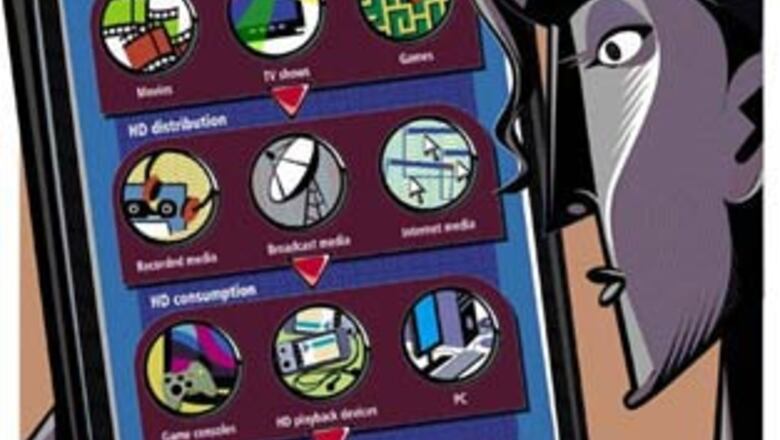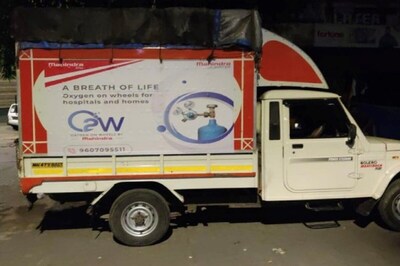
views
How do you convince people to spend their hard-earned money in a recession to buy an upgraded but expensive new product, one which will serve broadly the same function as its predecessor? If you are a TV manufacturer, the answer may be in convincing customers of the age-old bromide, "bigger is better", one more time. Or as it is more popularly known, "high-definition TV."
The approach has worked. Research firm iSuppli estimates that the market share of LCD TVs will rise from 4.6 per cent in 2008 to 49 per cent in 2012. Samsung India says 20 per cent of all its LCD TV sales are HDTV.
But high-definition isn't restricted to TV alone. Today it is the most powerful "catch-all" trend within electronics that is spurring consumers to buy a whole range of products and services ranging from Blu-ray players, game consoles, Internet video sites and broadcast television.
Not everyone has benefited equally from the HD wave though.
Consumers need to be aware that unless there is a clear, three-step HD value chain (HD content, HD distribution and HD consumption devices all need to be in place), the only HD they'll see is the sticker on the outside.
A major weakness in the link is the distribution chain for movies. Recorded HD movie discs were originally the great hope for electronics companies. Two rival disc technologies, HD-DVD (led by Toshiba) and Blu-ray (led by Sony), fought hard to become the de-facto format. Sony won that "format war" in 2008 when Toshiba finally abandoned HD-DVD, but its victory looks increasingly pyrrhic.
That's because Blu-ray players and discs are significantly more expensive than DVD players. The cheapest Sony Blu-ray player in India is Rs. 25,000, compared to Rs. 3,000 for a DVD player. Even in the US, the Mecca of gadget consumerism, Blu-ray's prospects look bleak. In the first six months of 2009, American consumers purchased six DVDs on average, versus just one HD disc.
But Blu-ray is slowly getting its act together in India. Companies such as LG, Sony, and Samsung are strategising ways to encourage Indian consumers to use Blu-ray products.
With many new Blu-ray products being launched, their prices are expected to decline. Moser Baer, which already sells movie VCDs and DVDs for very low cost in India (many below Rs. 50), has ventured into Blu-ray disc production. It is expected that with the growth of the market it will also sell Blu-ray movie titles in large numbers. Samsung is planning to launch its Blu-ray range of products by October 2009.
In developed countries, Blue-ray's losses meant other formats of distribution gained. HDTV owners are gravitating towards satellite & cable TV for their daily HD fix. In the US for instance, Comcast, the largest cable TV operator, offers over 60 HD channels, while rival DirecTV, the largest satellite TV operator, offers 130.
In India too DTH operator Sun Direct offers a few local language channels in HD format. Given that HD channels are likely to be subscribed by wealthier, HDTV-owning households, pricing them at a premium might be a good way for cable and DTH companies to improve their dismal average revenue per user.
That said, when it comes to having HD content beamed to your TV set, most DTH companies are so starved of satellite bandwidth that they don't have space for all the standard definition channels on offer, leave alone devoting more bandwidth to carrying HD versions of some.
Cable companies are still fragmented and only just getting their act together against DTH, so not much hope there either. News channel NewsX claims it is India's only HD-ready TV news channel, but who has the space to carry that?
However, online distribution is where HD could score big. Jagdish Rebello, senior director, iSuppli Corporation, says, "I think the market for physical discs [like Blu-ray] is past its peak and dying.
While the older generation may have been accustomed to buying discs from stores, the newer generation is used to online mediums like iTunes."
And HD has hooked the newer generation by getting on to the Internet in a big way.
US-based Netflix, which rose in fame due to its direct-mail DVD renting business model, today offers its subscribers pay-per-view HD movies streamed over the Internet. It says Internet consumers today vastly outnumber the ones who rent Blu-ray discs.
Hulu, a streaming video service formed as a joint venture between NBC, Fox and ABC, offers over 3,000 hours of ad-supported professional programming in the US. Many of its streams are high-definition. Even YouTube has an HD option for some of its videos.
Game consoles like Xbox 360 and Sony PS3 (HD-ready gaming devices) can stream HD Internet video directly to their TVs when you hook them up with third party software like PlayOn and Boxee.
But none of this will help Indian customers, for Internet video sites suffer from the same problem that channels do: Lack of bandwidth.
An ideal Internet connection speed recommended by Netflix for instance is 3 Mbps, which in India is still a pipe dream. Even the handful of those who have such high-speed connections will face exorbitant monthly bills once their bandwidth-hogging videos overshoot the puny download limits set by their broadband providers.
Which is all good for the electronics companies, but begs the question: What happens when their HDTV buyers realise that they're all dressed up with nowhere to go?




















Comments
0 comment